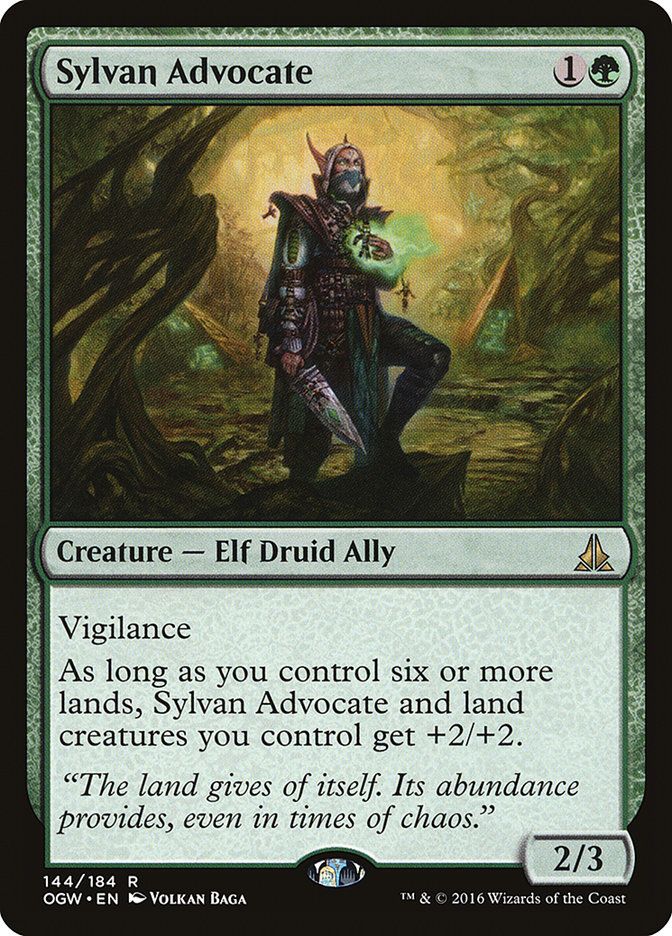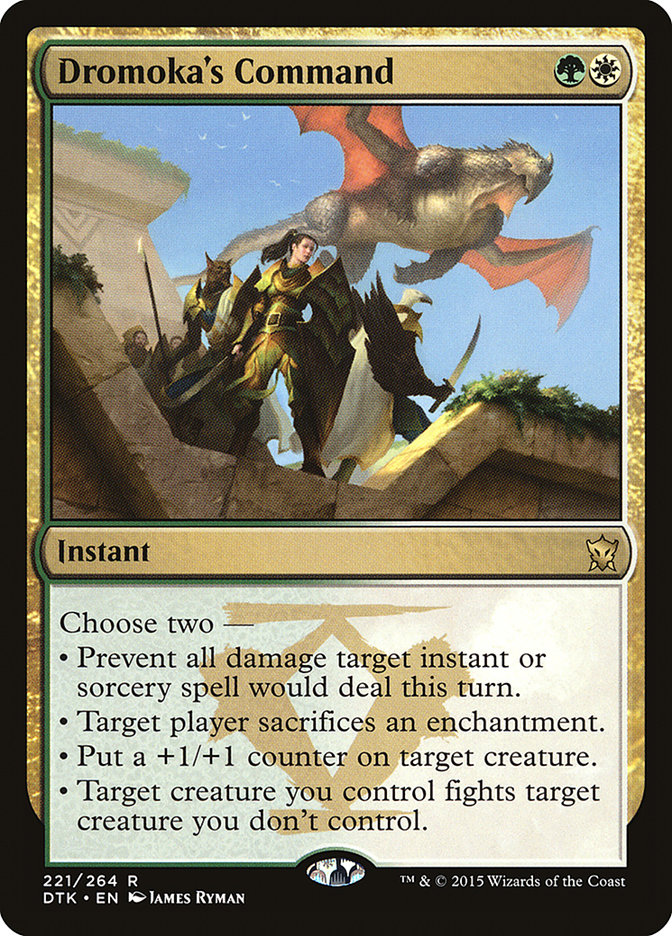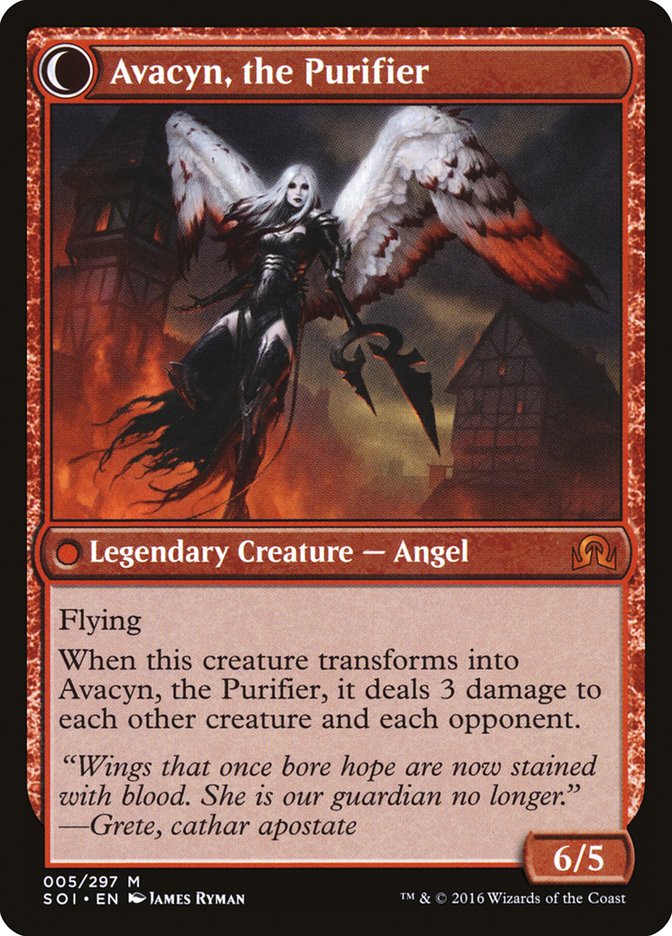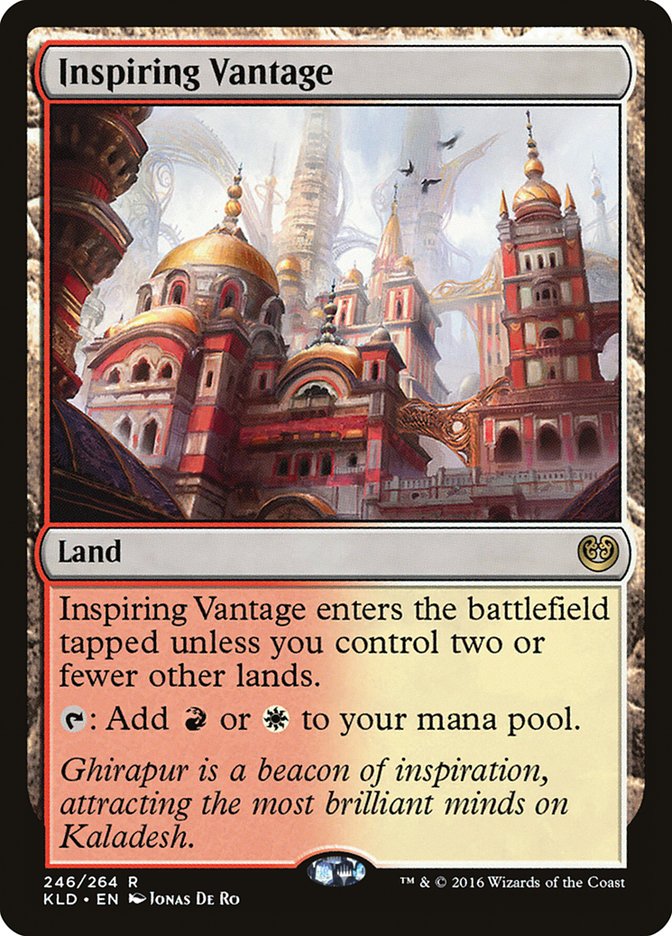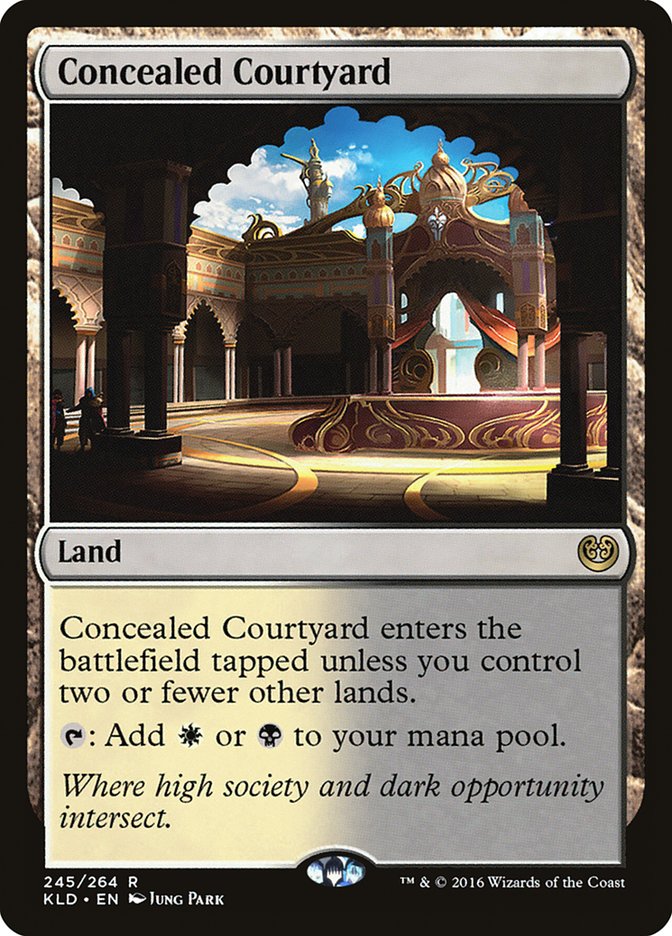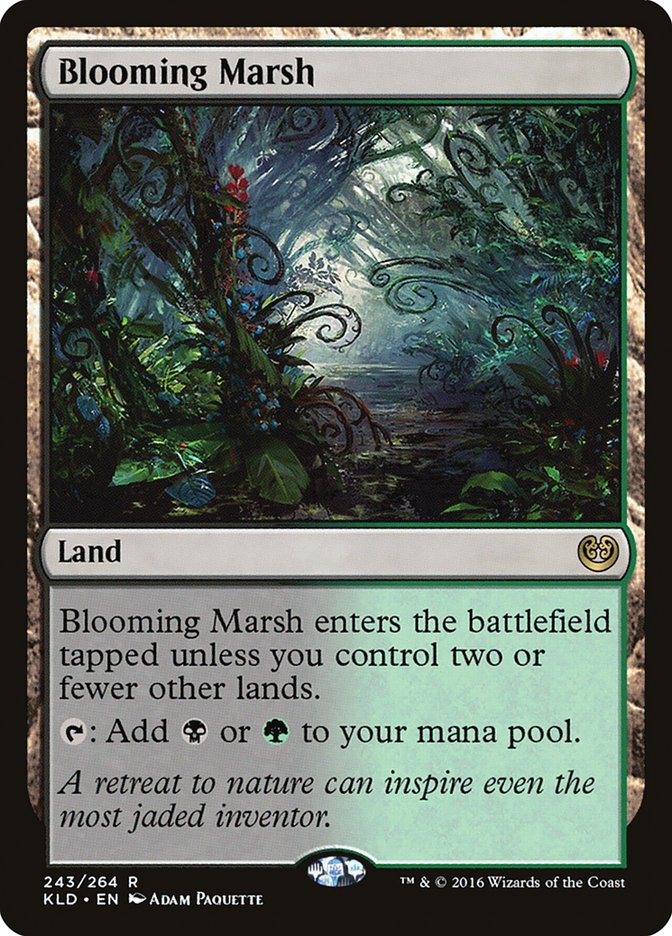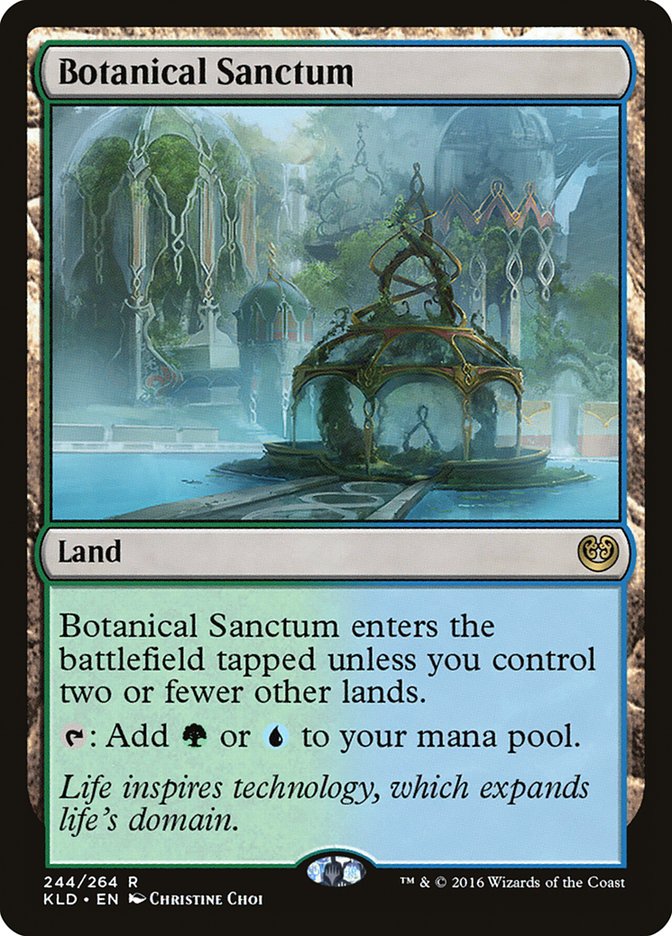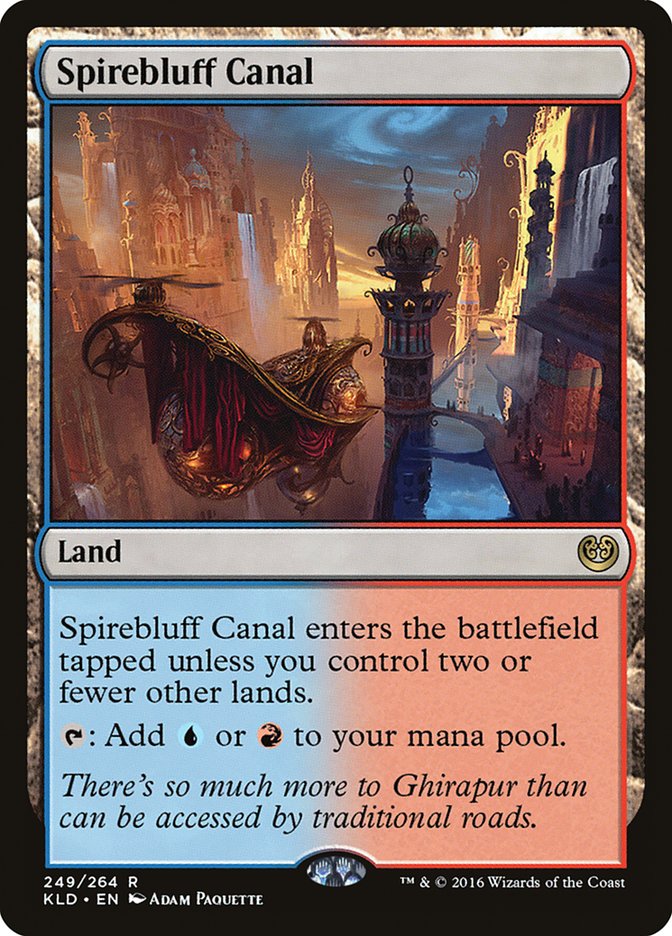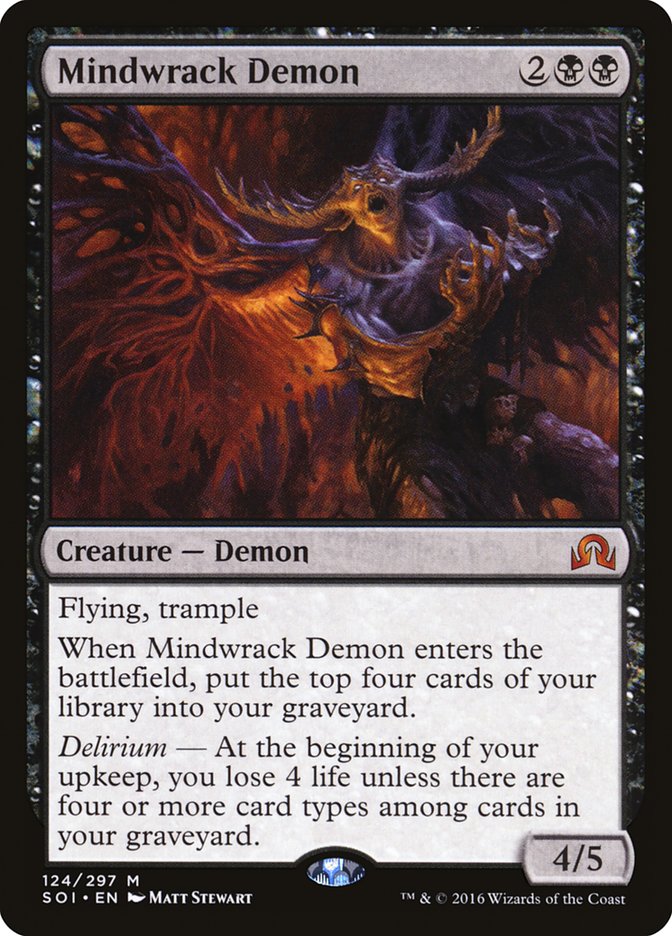Kaladesh is right around the corner! Modern B/G(/x) decks will get the best mana they’ve ever had via Blooming Marsh, a Gearhulk-dominated Standard format will just be in its first chapter, Filigree Familiar will get a few weeks at a dollar or less. Dozens of brand new cards will begin forging their legacy as they hit the shelves in just over a week.
For Magic Origins and Dragons of Tarkir, a light is going out. The end is coming! Dromoka’s Command doesn’t have another Grand Prix to dominate and we’re almost out of the Collected Company woods.
What does this mean?
When Standard rotation comes around each year (well, every six months now), many people, myself included, get swept up in the excitement of preview season and forget about what is already there. Plenty of cards that are already legal are really getting a second chance at life without certain archetypes holding them back in the same way that they were previously.
Analyzing what commonly played cards are leaving and what archetypes get a bit more wiggle-room as a result is one of the best skills to develop as a Magic player and deckbuilder.
What Is Leaving?
It’s easy to just use Gatherer or the StarCityGames.com Advanced Search Function to single out what cards are in Magic Origins and Dragons of Tarkir, but this kind of question is more-or-less asking what cards are leaving and matter. Sure, Hedonist’s Trove may be leaving, but there aren’t too many people who will be missing it. On the other hand, there are all of these cards:
That is a huge portion of the format.
“Emma, we understand that a third of the legal cards in Standard are rotating. Can you tell us something we don’t know?”
That isn’t the entire point. This isn’t necessarily a third of the playable cards in Standard, and these cards no longer being legal can open up some exciting possibilities for other strategies to flourish.
This provides a reasonable mental exercise on determining what cards that could be on the surface and deeper.
Collected Company
Collected Company rotating pulls the rug out from under what has been the Standard format “bogeyman” (I hate this phrase almost as much as my editor) since the release of Eldritch Moon. Collected Company rotating means a few things for players and opponents of the deck alike:
1. It frees up deckbuilding constraints for people playing creature-based midrange decks.
2. It allows aggressively slanted creature decks to function.
Collected Company decks may have different literal cards in them, but they all follow a relatively simple formula:
· 24-26 lands
· 25-28 creatures for Collected Company
· 4-10 non-Collected Company creature, nonland cards
This meant that after Collected Company was added to the shell, that only allowed for between zero and six cards that weren’t lands, Collected Company hits, or Collected Companies themselves. When decks end up being structured this rigidly, it’s hard to really make any innovations to the archetype and the deck ends up in a cyclical phase of adding two or three new cards in order to bite its own neck.
The prevalence of Collected Company decks in Standard made it nigh-impossible to justify playing low-to-the-ground creature decks that didn’t feature the four-mana instant. Tom Ross and Cedric Phillips may have had some finishes with Mono-White Humans, but in a world full of two- and three-mana 2/3s with spells attached to them, being a vanilla 2/1 for W is a rough life.
With Collected Company on the way out, this begs the question, “What gets better when people have to play fairly with their creatures?” For one thing, reasonable two-mana creatures become much better. It’s significantly less likely that players will have to compete with a curve of Sylvan Advocate into Reflector Mage into Collected Company; competing on the battlefield is going to become reasonable again.
In a lot of ways, this may just mean that creatures get worse. A great deal of why Languish and Planar Outburst saw so little play towards the end of this Standard format was due to the embarrassment associated with the opponent just dropping four or more power worth of creatures onto the battlefield after one’s sweeper resolved. At that point, if you’re in the market for a four-mana instant or sorcery spell, it was likely better to play the one that could result in your opponent dying if they stumbled.
Removing Collected Company from the equation also means that the decks themselves can balance a bit better between creatures and noncreature spells. Many cards in the Bant Company deck were powerful due to how strong they were off of a Collected Company or how well they played to the flash-like strengths of the deck, while it featured all of these at some point or another:
Many of these cards are much worse when they aren’t actively synergizing towards something else (not to mention that half the cards on the list are rotating as well).
With these decks playing more spells, cards that were popular due to their ability to profit from battlefield stalls or capitalize in drawn-out, removal-light games will likely be a bit less prominent than they are in Standard’s current iteration. Tireless Tracker is a powerful card advantage engine, but Tracker’s power tends to lie in the fact that it doesn’t die very often. If that paradigm shifts, Tracker’s measly two points of toughness on a three-drop is a real weakness.
Dromoka’s Command
Dromoka’s Command has been warping the format around it for months. The initial bit of information to look over is if there are any enchantments that get better now that they stick around more:
At the beginning of Shadows over Innistrad Standard, there was a G/B Tokens deck that took advantage of Cryptolith Rite and Zendikar Resurgent to chain multiple creatures into one another and swarm the battlefield over the course of a turn or two:
Creatures (29)
- 4 Elvish Visionary
- 2 Sidisi, Undead Vizier
- 1 Shaman of Forgotten Ways
- 4 Hangarback Walker
- 2 Ulamog, the Ceaseless Hunger
- 4 Catacomb Sifter
- 4 Blisterpod
- 2 Scion Summoner
- 2 Ulvenwald Hydra
- 4 Loam Dryad
Planeswalkers (3)
Lands (15)
Spells (13)

The deck ended up not being able to afford Zendikar Resurgent due to the popularity of Dromoka’s Command; losing a seven-mana spell to a two-mana instant (that is maindecked in multiples) is nothing short of horrifying. Without huge quantities of enchantment hate, these spells stick around reliably and are actually quite hard to deal with.
Archangel Avacyn was a card that both benefited from and was hurt significantly by Dromoka’s Command. Later in the game, it was possible to cast an Archangel Avacyn, let the trigger resolve, and then use Avacyn to fight down the opponent’s 5/5 creature. On the other side of the table, Dromoka’s Command was one of the only ways to reliably attack into open Archangel Avacyn mana, casting the spell with Avacyn’s indestructible trigger on the stack.
Dromoka’s Command being gone also rewards people who are better at playing on the battlefield.
While Dromoka’s Command was legal, it was much harder to profitably block or attack while avoiding a messy fight scene becoming a one-sided bloodbath for the person without a copy of the Command. It was commonplace for blocks to occur, a counter be placed on a creature that was previously the same size as what it was blocking, a chump-blocking creature fighting a larger creature, and then a medium creature trading in combat with the large creature.
Painlands
If I were to lead here saying that mana for the enemy color pairs is getting worse as a result of this exchange, I would be lying. While we may be losing the Apocalypse painlands, we are gaining the new fast lands from Kaladesh.
This may seem like an insignificant change, but the shift in deckbuilding will be relatively enormous.
Without the painlands, having colorless in a card’s mana cost is going to be a significantly steeper than previously. Despite seeing Thought-Knot Seer pop up in several B/W Control decks this format, without Caves of Koilos, this is much more akin to a pipe dream than a deck with a reasonable manabase. There will be more legwork going forward when trying to fit Kozilek, the Great Distortion or Reality Smasher into a deck with a colored manabase.
Aether Hub may do a reasonable impression of a painland, but without other Energy-producing cards, it doesn’t do nearly as much as a Caves of Koilos will do for a Grasp of Darkness deck over the course of an entire game. Decks are only as good as the consistency of their mana, and without anything to fill the void of tri-lands that the painlands are, it’s hard to imagine decks that are anything more than two types of mana (encompassing both colors and colorless).
The largest shift in dynamics that will occur with these lands being exchanged for one another is in the speed that enemy-colored decks tend to play. To be as concise as possible, it’s very hard to play control decks with too many lands that enter the battlefield tapped. With creature-lands and the Shadows over Innistrad lands (that always enter the battlefield tapped), it isn’t realistic to play a control deck in which every single two-color land enters the battlefield tapped after turn 3. Many control decks tend to be on the back foot due to their reactive nature, and being a turn behind on mana (two turns behind if on the draw) isn’t a realistic formula to win a game.
Bringing It All Together
When evaluating new cards or the roles that specific cards will play in a (largely hypothetical) metagame, it is important to understand what cards are going to bring to the table and what the now-absent cards were keeping out of play. Don’t worry so much on filling the graveyard without Jace, Vryn’s Prodigy to flip; don’t value Prized Amalgam so highly without Gather the Pack sticking around; and so forth.
The other side of all of this is looking at what cards the seasoned veterans may be continuing to keep in check. Mindwrack Demon and other low-impact creatures costing four or more still get crushed by Reflector Mage, for example. Finding the best combination of cards that are well-positioned against these upperclassman (and maybe some of the seasoned gatekeepers themselves) is the best way to go into a new format with a rightfully successful string of results.





